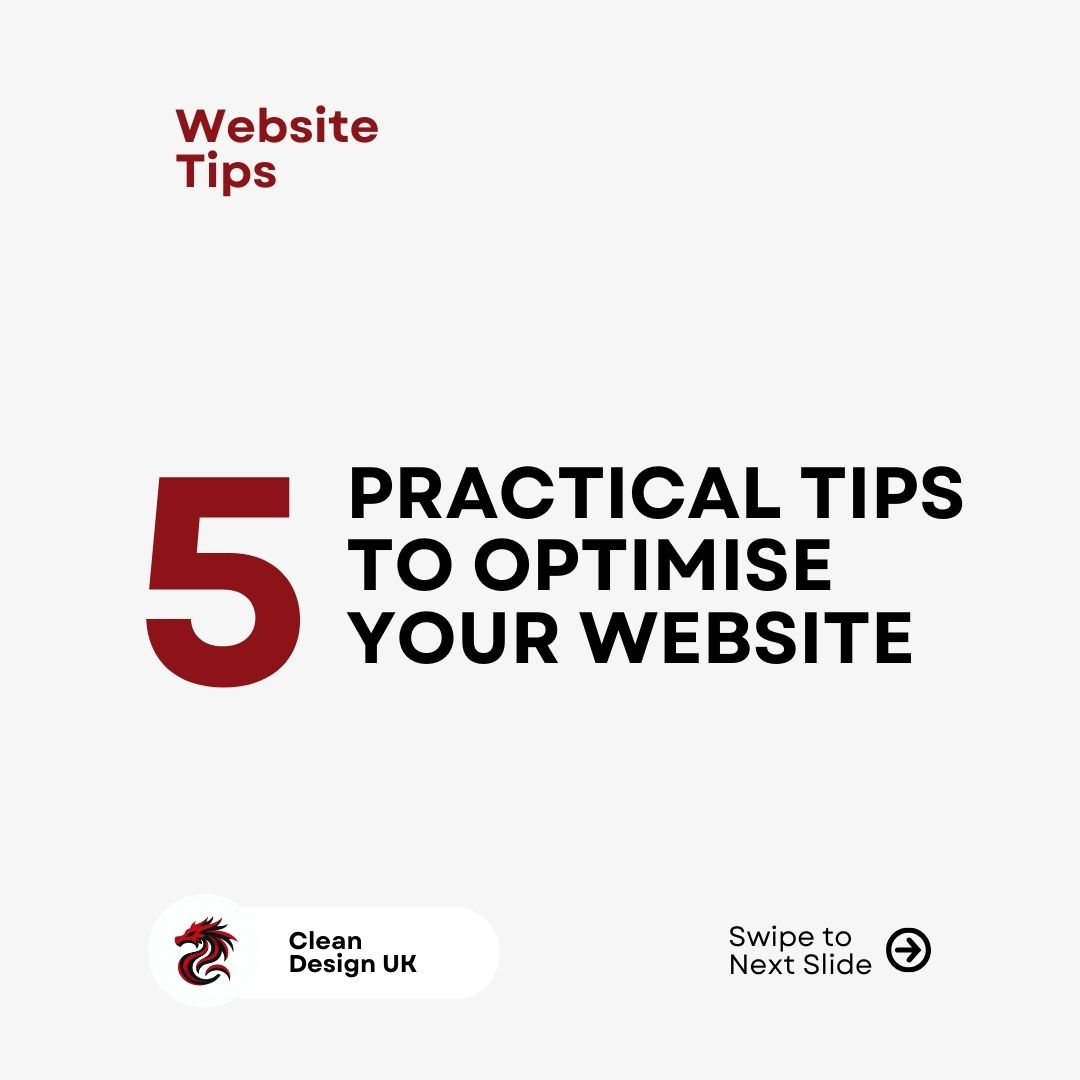5 Tips to Optimise Your Small Business Website
Transform your site into a conversion engine with these five must‑do optimisations—and don’t forget your free checklist below!
1. Boost Loading Speed
Case Study: ACME Shop reduced their Largest Contentful Paint from 4 s to 1.8 s by converting images to WebP and enabling lazy‑load, cutting bounce rate by 15 %.
- Compress & modernise images: Convert to WebP/AVIF and lazy‑load offscreen assets. Deep dive: Do This, Not That: Optimising Your Website’s Loading Speed
- Minify & bundle code: Remove whitespace, combine CSS/JS; leverage HTTP/2 or HTTP/3 for parallelism.
- Use CDN & caching: Offload static assets; set long‑lived cache headers and define a performance budget.
- Track Core Web Vitals: Aim for LCP ≤ 2.5 s, FID ≤ 100 ms, CLS ≤ 0.1 with Lighthouse or real‑user monitoring.
2. Ensure Mobile Responsiveness
Over 60 % of visits come from mobile—design for small screens and touch first:
- Large tap targets (≥ 48 px) and hidden menus for secondary links.
- Mobile‑first CSS & progressive enhancement to build core features first. Learn more: The Importance of UX in Web Design
- Test under throttled network to optimise media and scripts for slow connections.
3. Optimise On‑Page SEO
Signal relevance to users and search engines alike:
- Use target keywords in title tags, H1–H3s, meta descriptions, and human‑friendly URLs.
- Write keyword‑rich alt text for images and captions where possible.
- Implement JSON‑LD for Article & FAQ schema to unlock rich snippets.
- Update cornerstone posts regularly and interlink topic clusters. See: Content is King: Tips for Content That Resonates
5. Use High‑Quality Visuals & Social Proof
Build trust with polished media and real feedback:
- Showcase testimonials, star ratings, or mini case studies.
- Embed branded videos with captions and transcripts.
- Use custom illustrations and white space for clarity—see What Is White Space?
Free Optimisation Checklist
- ☐ Images in WebP/AVIF & lazy‑loaded
- ☐ LCP ≤ 2.5 s, FID ≤ 100 ms, CLS ≤ 0.1
- ☐ Mobile tap‑targets ≥ 48 px; throttling tested
- ☐ Article & FAQ schema via JSON‑LD
- ☐ Primary CTA above the fold
- ☐ Custom visuals & ≥ 3 social‑proof items
Frequently Asked Questions
- What is a good LCP score?
- LCP under 2.5 s is considered good; aim for under 1.8 s for top performance.
- How often should I update my cornerstone content?
- Review and refresh cornerstone posts at least quarterly to maintain relevance.
- What are Core Web Vitals?
- They’re Google’s metrics for page experience: LCP, FID, and CLS.
- How many menu items should my site have?
- Limit the primary menu to 5–7 items to reduce choice paralysis.
- How do I implement JSON‑LD schema?
- Insert a
<script type="application/ld+json">tag with the schema block in your <head>. - Which image formats boost speed?
- Use WebP or AVIF for photos and SVG for vector graphics.
